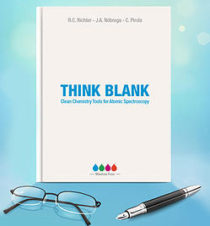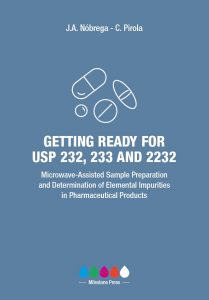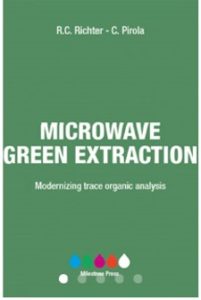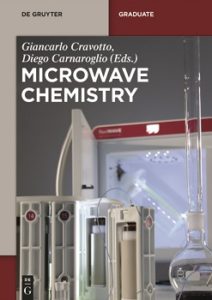Analytix releases four books for the laboratory chemist
 THINK BLANK – Clean chemistry tools for atomic spectroscopy
THINK BLANK – Clean chemistry tools for atomic spectroscopy
Instrumental analysis has continuously evolved in the last decade and determination of trace elements is becoming a routine task in analytical laboratories. A laboratory must have full control of analytical blanks and sample preparation for obtaining accurate results. The application of instruments and strategies to control sample prep blank is often called a “Clean Chemistry” technique.
The THINK BLANK book discusses how to control contaminations and modern strategies for microwave assisted sample preparation. Topics include microwave digestion, evaporation, use of inserts for low sample amounts, and single vessel considerations
 USP 232, 233, 2232, and ICH Q3D – Are you ready?
USP 232, 233, 2232, and ICH Q3D – Are you ready?
“GETTING READY FOR USP 232, 233 AND 2232 – Microwave-Assisted Sample Preparation and Determination of Elemental Impurities in Pharmaceutical Products” adopts a Q&A style for easy reading and answers questions many analysts are asking about the overall implementation of the sample preparation and subsequent analysis described in the new chapters.
The book includes an overview of the new guidelines, laboratory considerations, reagent choice, microwave technologies available, how to evaluate the efficiency of a digestion process, and general procedures for establishing an analytical procedure. The book also covers in-depth review of ICP-OES and ICP-MS techniques, and how to validate developed analytical procedures
Request a copy here
 Environmental sample extraction – going greener
Environmental sample extraction – going greener
Instrumental analysis has continually evolved to keep up with the demands of the analyst but sample preparation has failed to keep up with the evolution of modern trace organic analysis instrumentation.
The book discusses the importance of sample preparation for trace organic analysis.
Part 1 focuses on the fundamental theory of extracting an analyte from a sample matrix, modern extraction techniques, and post extraction processing. Part 2 reviews modern instrumental analysis techniques (LC, GC, and GCMS) including theory and how they relate to the sample preparation process. Part 3 discusses how advances in microwave technology bring sample preparation to the same standards as instrumental techniques.
 An introduction to microwave chemistry
An introduction to microwave chemistry
Microwave Chemistry describes the state-of-the-art of microwave (MW) technology and its applications in chemistry. — Prof. Rajender S. Varma, Cincinnati, Ohio, USA and RCPTM, Olomouc, Czech Republic writes: During the past few decades, MW heating technique has moved from an academic curiosity to widespread acceptance by several chemical disciplines ranging from polymers to nanomaterials. This unique alternative activation method for expeditious synthesis not only shortens the reaction time but minimizes or eliminates the side product formation thus contributing to a greener and sustainable approach to chemical syntheses, especially in benign media such as water. Recent ‘microwave-to-flow’ endeavours with suitably equipped fluidic flow devices may help produce meaningful amount of chemical products in a continuous mode, thus circumventing the inherent limitations of scale-up. The effort by the editors and the contributing authors needs to be commended for updating vital information for the newer generation who grew up with MW oven as an essential gadget at home and now can use in the laboratory as well.
The book is available from De Gruyter books for £63.99
